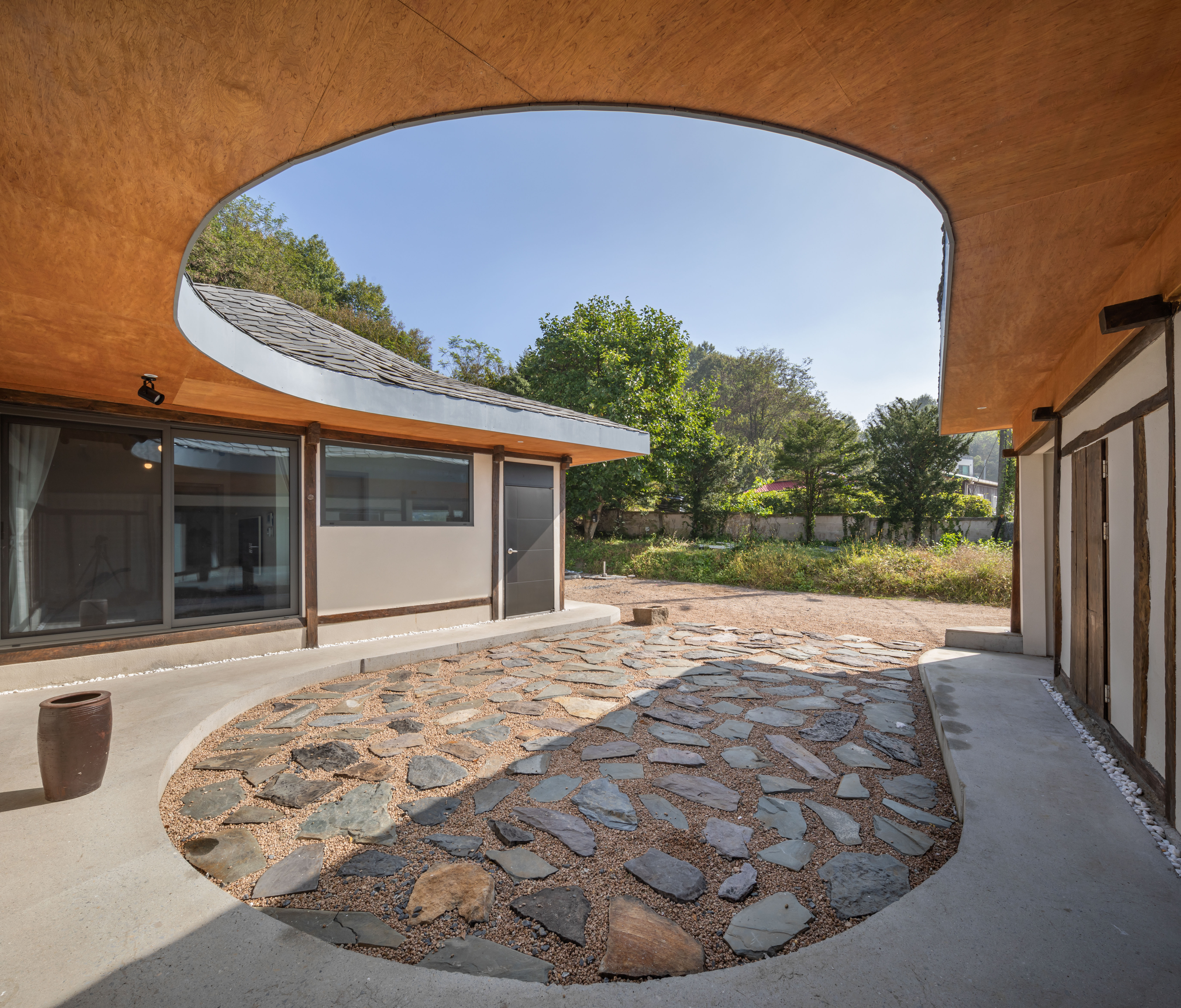






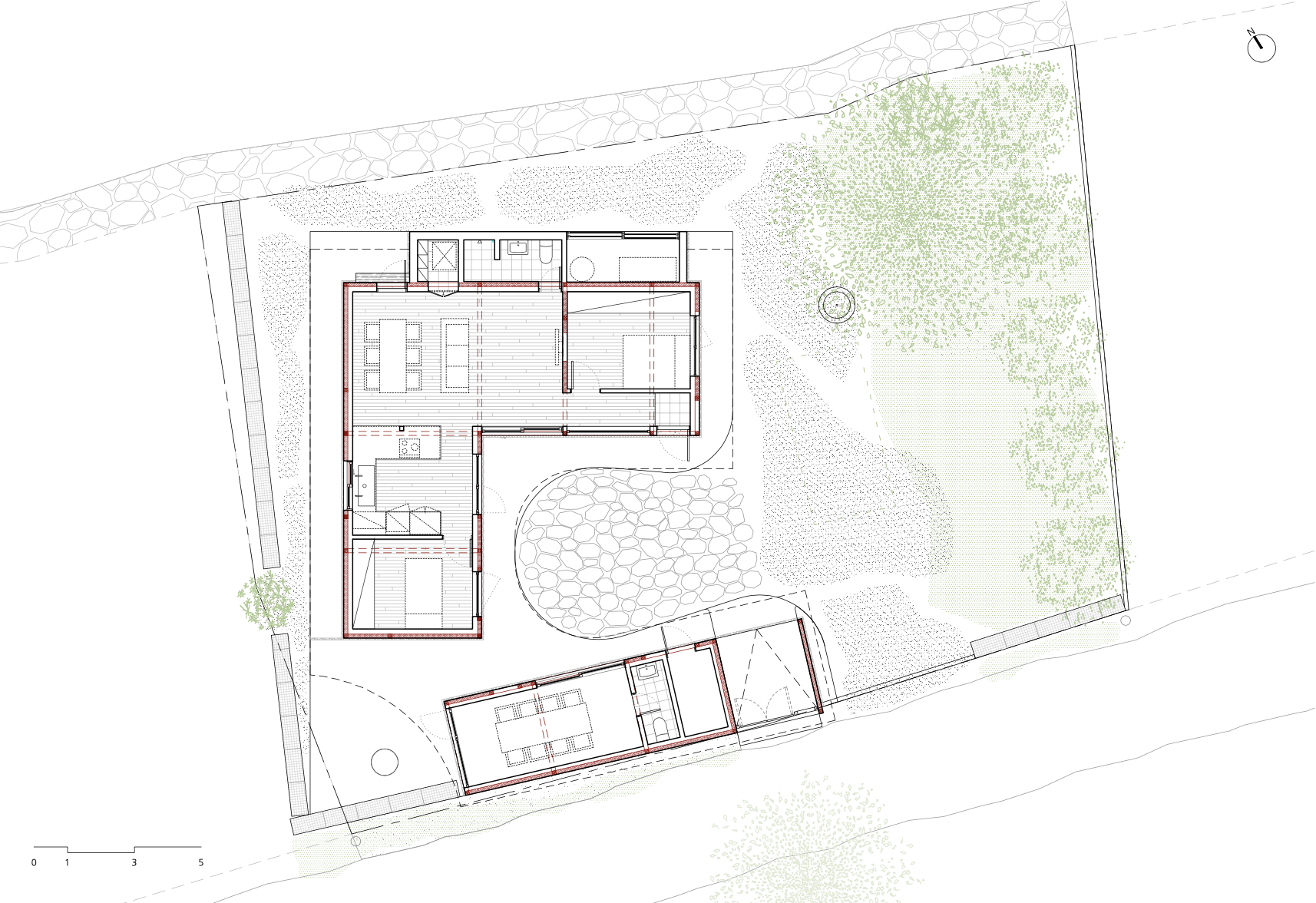

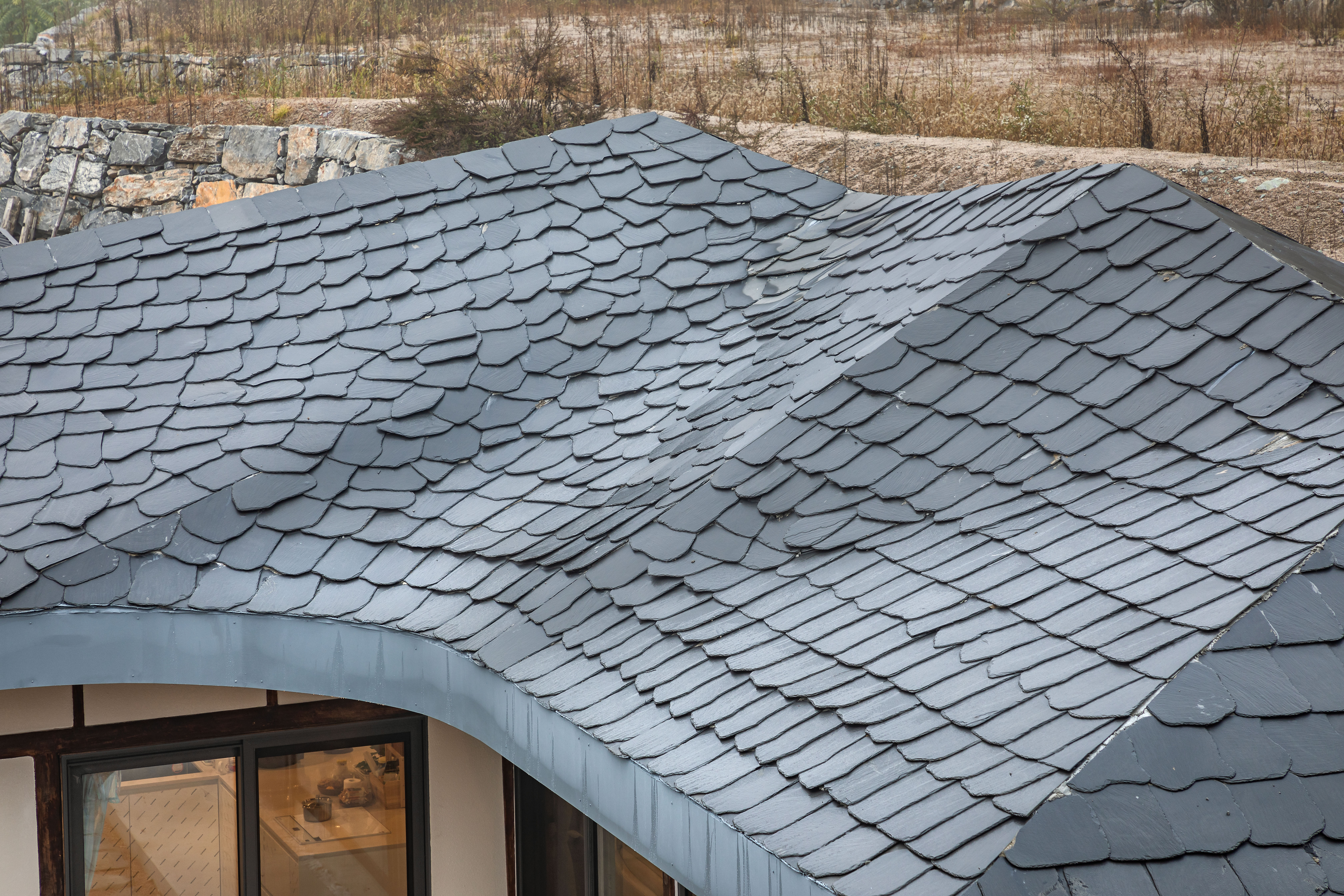





YouTube

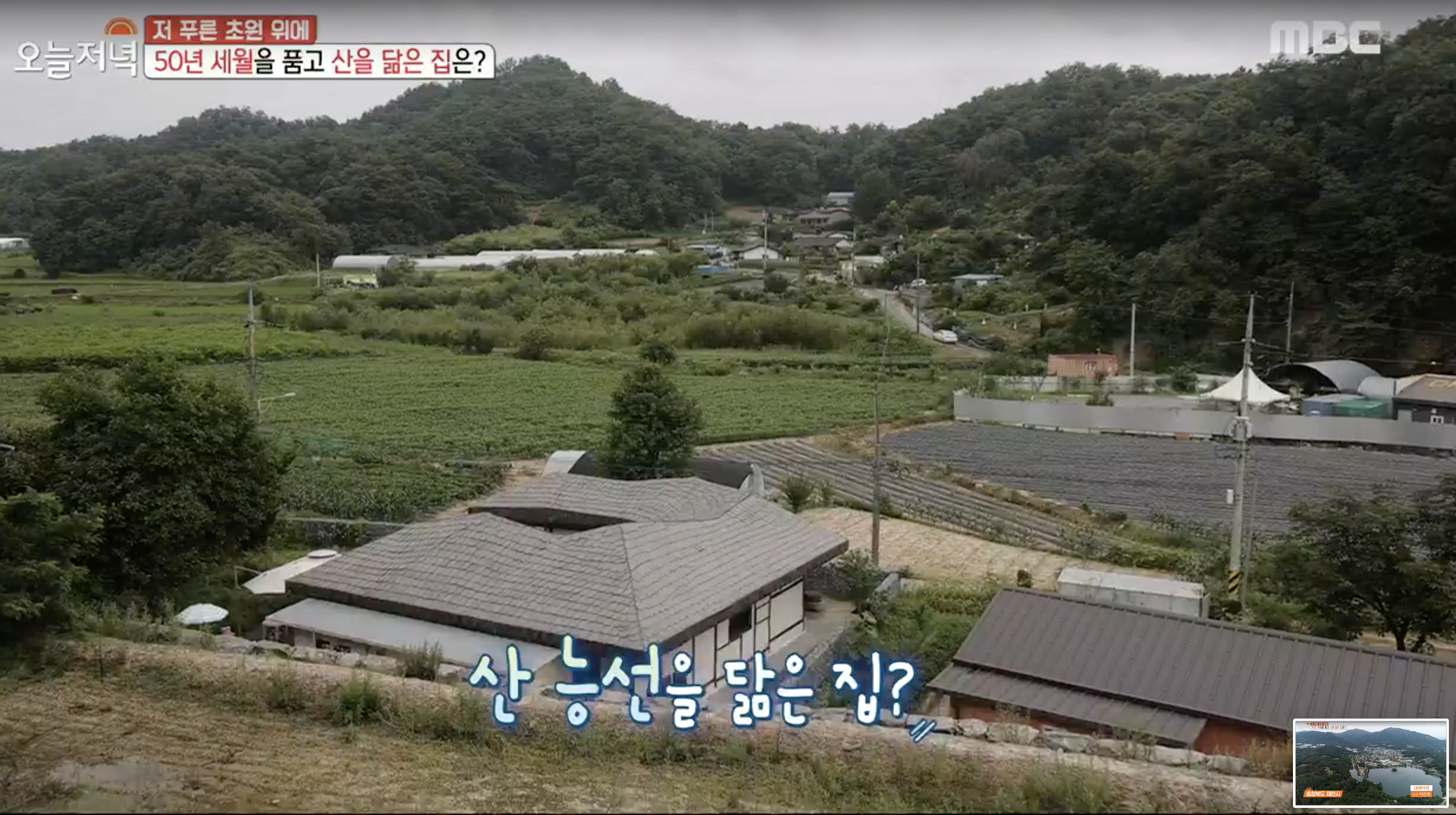
July 2023 @ MBC 오늘저녁
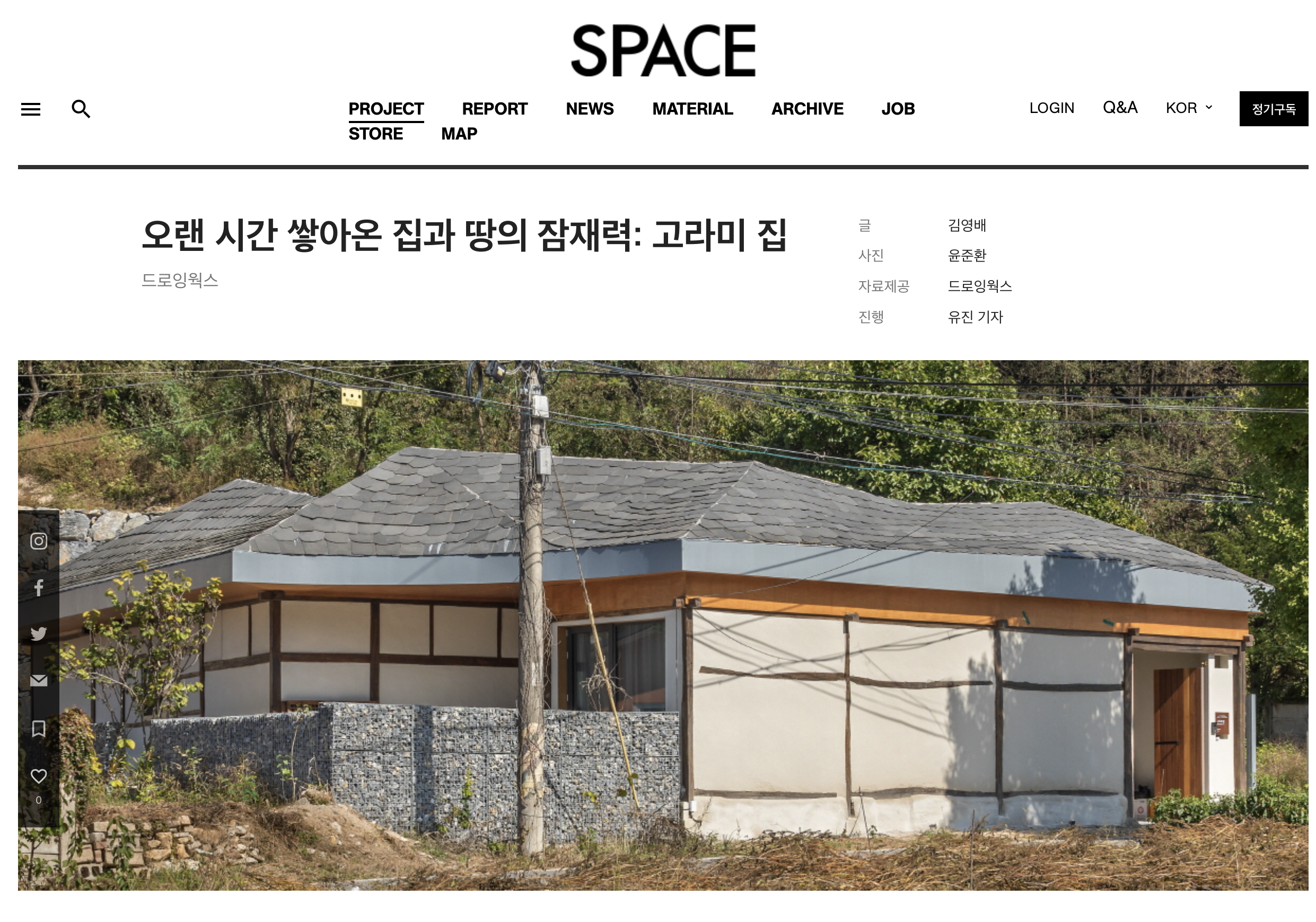

April 2023 @Archdaly

March2023 @Chosun media
YouTube

December 2022 @ EBS: Architectural Exploration House

@ Home&Garden Lifestye Magazine


On site during construction

Diagram - Combining Existing Wood Structure with New Structure


Final model

Initial idea sketch - February 2022

Wooden structure



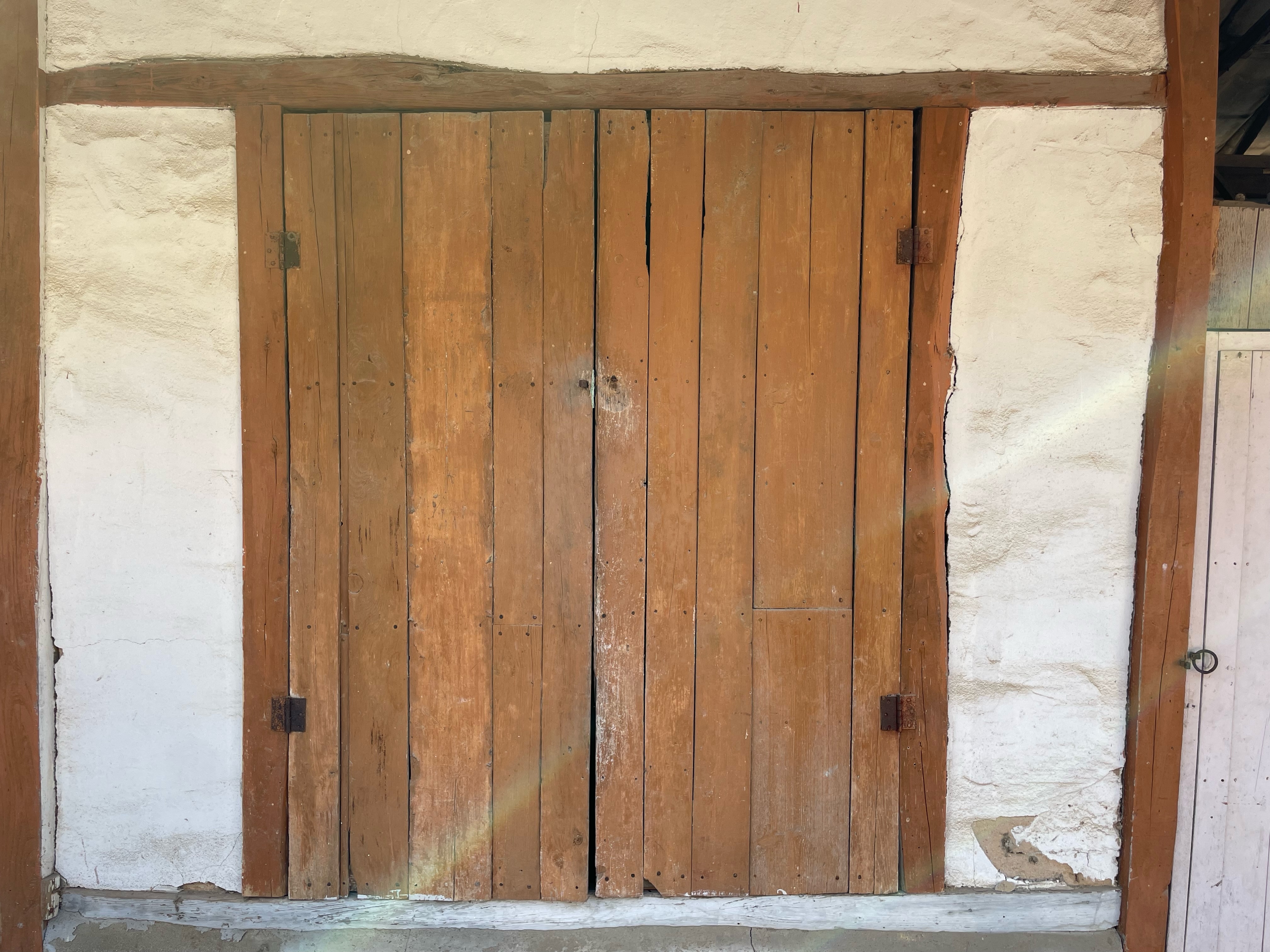


The preservation of the vernacular architectural styles

1972년 임자년 정월 이십사일 미시 경자생 좌 입주상량
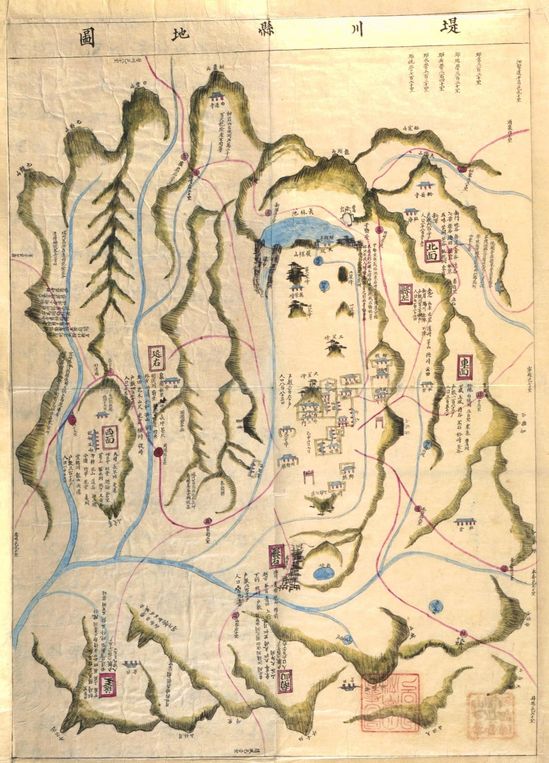
Jecheon-hyeon Map, Local Map of the Late Joseon Dynasty

On site - November 2021
| 용도 | 단독주택 |
| 위치 | 충청북도 제천시 고암동 + |
| 면적 | 105 ㎡ |
| 규모 | 지상 1층 |
| 기간 | 2021. 11 - 2022. 07 |
| 협력 | 일맥구조, 진경, 황토나눔 |
| 발주 | 권희근 |
| 시공 | 인디자인플러스 |
| 영상 | 서용찬 |
| 사진 | 윤준환_UrbanRecord ⓒ |
| 진행 | 준공 |
집안이 대대로 삶을 꾸려 왔던 땅 위에 지어져 50여 년의 세월을 지낸 주택을 새롭게 고쳤다. 현재는 ‘고암동’이라 불리는 충북 제천의 한 마을이며 옛 지명은 고라미(고래미) 마을이다. 건축주 부부는 최근까지 성남 분당의 아파트에 살며 활발한 사회활동을 통해 도심 생활에 익숙한 라이프스타일을 가지고 있었다. 그러다 남편이 연로하신 어머니를 모시며 2,500평이 넘는 땅에 콩과 오미자를 심어 가꾸고자 5년전에 제천으로 옮겨 살게 되었다. 아내는 어린이집을 운영하며 여전히 아파트 생활을 하고 있지만, 주말이면 고라미집에 내려와 시간을 보내며 주말부부로 생활하고 있다. 설계를 의뢰받고 제천집으로 갔던 날을 회상해보면, 초겨울의 낮시간동안 마당에서 가족들이 환대해주어 오미자 차와 고구마를 먹으며 집에 대한 추억 이야기를 들었다. 옛집의 모습을 유지하며 짓고 싶지만 필요로 하는 공간을 담을 수 있을지 등 여러 이야기를 듣는중에 해가 저물어가며 선선한 바람이 불고 햇살은 깊게 지붕 너머로 들어왔다. 집뒤 산을 가족들과 올라가 집과 주변 마을을 내려다 보며 풍경을 감상했다.
현대건축에서 디테일은 치밀해야하고 정교할 수록 멋질 수 있지만 깨달음을 주는 토속적인 요소들 앞에서는 무용지물이다. 이 집은 조선시대의 양식을 따르는 우리가 알만한 양식의 한옥집은 아니다. 삐뚤빼뚤한 소나무를 켜서 얼기설기 쌓아 만들어 놓았다. 그리 치밀한 구석은 이 집 어느 요소에도 없다. 콕집어 얘기하고나니 마치 엉망인 집을 만지는듯 하지만 결코 그렇지 않았다. 이 집을 처음 본 순간을 떠올리면 그러한 요소는 눈에 들어오지 않고 전체의 모습이 주는 편안함과 마당을 비켜지나가는 빛과 바람만 느껴졌다. 토속적 요소들은 자연의 선형을 닮아 자연스럽게 세월의 흔적과 함께 공간의 분위기를 전해주고 두 채의 처마와 깊이는 특별한 마당의 분위기를 담고 있다.
기존 집은 긴 세월을 보낸 오래된 농가인지라 유독 질서가 없을 정도로 구조가 어수선했다. 지붕 구조틀 아래 평천장은 시멘트와 흙벽, 두 겹으로 시공돼 기둥을 무겁게 짓누르고 있었고 외부의 흙벽 역시 기울어 있어 구조용 파이프로 고정해가며 철거했지만, 일부가 무너지기도 했다. 조선시대의 양식을 따르는 일반적인 한옥은 아니었고, 소나무를 얼기설기 쌓아 만든 집이었다. 목재가 삐뚤빼뚤하고 흙벽도 여기저기 배가 불러 있어 치밀한 구석은 이 집 어느 요소에서도 찾아볼 수 없었지만, 편안하면서도 독보적인 분위기를 풍겨 그냥 허물기에는 아까운 집이었다. 마당은 빛과 바람이 비켜 지나가고 자연의 선형을 닮아 무척이나 자연스럽고 토속적인 매력이 있었다. 세월의 흔적과 함께 공간 특유의 분위기가 형성되었고 처마와 마당의 깊이는 온화한 느낌을 전달했다. 이곳에서 어린 시절을 보낸 건축주 남편도 손주들과 함께 이곳을 찾을 정도로 옛집에 애정을 품고 있었다. 건축주 부부가 생활하기에도, 자녀들이 와서 머물다 가기에도 신축하는 게 유리했지만, 옛집의 풍경을 고이 간직하기 위해 리모델링을 결정했다. 옛집에서의 추억과 기억을 소중히 여기는 건축주와 무조건 허물고 새로 짓기보다는 생활의 편리함은 보장하되 옛집만의 감성은 살리고자 하는 건축가가 만나서 설계를 시작했다.
무엇을 비우고 드러낼지, 무엇을 남기고 덧씌울지 고민했다. 옛집은 각각 형태도 다르고 역할도 다른 ㄱ자 본채와 ᅳ자 행랑채가 ㄷ자 형태로 마당을 에워싸는 형태로 배치돼 있었다. 이를 그대로 살리되 실 구성에는 변화를 주었다. 기존에 방 3개가 있던 본채는 방 1개를 거실로 변경했고 채광을 위해 창을 내다보니 기존의 모습을 그대로 유지하기는 어려웠다. 본채 거실과 주방은 ㄱ자 공간의 연결부에 구성했고 양 끝단에 방을 2개 구성했다. 기존 천장의 서까래를 유지하며 합판을 그 위에 얹은뒤 단열재를 설치했기에 거실과 주방은 하얀 벽면을 양쪽에 두고 높은 천장고를 갖게 되었다. 기존 창고로 사용하던 행랑채는 방 1개와 욕실 1개만을 구성하면 되었기에 매력적인 질감과 흔적을 유지할 수 있었다. 행랑채는 길에서 마주하는 주택의 첫인상이 될 수 있었으며 게스트 공간으로 활용할 수 있도록 했다. 행랑채는 도로로부터의 시선을 차단하면서 주택을 적당히 보호하는 담장의 역할도 겸한다. 마당은 동쪽을 향해 시야가 시원하게 개방돼 바람이 드나드는 길이었다. 50년이 넘은 서까래와 행랑채의 창고 문은 세월의 멋으로써 그대로 살렸고, 본채에 있던 기존 구들장도 마당에 조경석으로 활용했다. 원래 있던 서까래도 남겨둔 채 그 위를 합판으로 겹겹이 덮어서 시공했다. 삐뚤빼뚤한 나무와 유사하게 얹혀 기존 모습과 조화롭게 만들기 위함이었다. 넘실대는 형상의 지붕은 금속틀을 기존 목구조를 피해서 설치하는 방식으로 제작했다. 지붕의 외부 마감재로는 천연 슬레이트를 시공해 치밀한 설계 계획 의도를 넘어 패턴을 결정해나가며 만들었다. 이렇게 어긋나게 자리한 두채를 지붕이 하나로 이어준다. 뒷산의 능선을 닮아 여러 경사를 가진 지붕은 묵직하게 집 위에 눌러앉은 모양새다.
길에서 보이는 집의 모습, 입구에서 마당으로, 마당에서 집으로 이어지는 장면과 마당이 외부로 열리는 풍경에 주목해 본다. 구법과 양식, 재료 측면에서 옛 방식과 현대적 방식이 조화롭게 어우러진다. 드러내고 덧씌우며 오랜 시간 쌓아온 고라미집과 땅의 잠재력은 과거로부터 현재, 나아가 미래로까지 이어질 것이다.
A housing area that was built on land where generations have been around for 50 years was newly fixed. It is a village in Jecheon, Chungcheongbuk-do that is now called ‘Goam-dong’ and the former name of the area was Gorami (Goremi) Village. A married couple is the building owner and they had been residing at an apartment in Bundang, Seongnam and were used to city life because they engaged in active social activities. Then, the male owner had to take care of his elderly mother so they moved to Jecheon 5 years ago to plant beans and omija fruits on a land that is over 2,500 pyeong in size. The female owner is running a daycare center and still lives in the apartment, but she comes to the Gorami home on the weekends so they are a weekend couple.
Looking back on the day when I went to the house in Jecheon after their request for the design plan, the family welcomed me in the yard during the daytime in early winter and they shared memories about their house while we enjoyed omija tea and sweet potatoes. While we were discussing many topics such as whether it is possible to build a house that maintains how it looked in the past but contains the necessary spaces, the sun was setting with a refreshing breeze and the sunlight came through over the roofs. I went up the mountain behind the house with the family and we looked down on the village around the house and appreciated the view.
In modern architecture, details must be elaborate and the more exquisite it is, the greater it becomes, but it is all useless before folksy elements that provide enlightenment. This house is not a type of hanok (traditional Korean-style house) understandable to us as we conform to the form of the Joseon Dynasty. Crooked pines were layered in complex patterns. No element demonstrates any elaborate point in the house. After pinning it down, it is as if I am getting my hands on a house that is a mess, but it is not like that. The moment I first saw this house, I did not notice these elements. Instead, I only felt the comfort provided by the image of the house and the light and the breeze that steers by the yard. The folksy elements take after the outlines of nature and naturally convey the traces of time together with the mood of the space and the two eaves and depth reflect the mood of a special yard.
The existing house had a cluttered structure to the point where it seemed disorderly, perhaps because it is an old farm. The flat ceiling under the roof frame was constructed in two layers, with cement and daub, so it was heavily weighing down on the pillars. Also, the dried mud on the outside was slanted so it was attempted to try and fix them with structural pipes but it partially collapsed. It was not a general type of hanok that abides by the form of the Joseon Dynasty as we know it, and it was a house that was built by layering pines in perplexed layers. The lumber was crooked and the dried mud was stuffed here and there, so none of the elements in the house were elaborate. Yet, the house gave off a comfortable and unrivaled atmosphere so it was a waste to demolish it. The yard had a natural and folksy charm because light and breeze steered by and also because it resembled the figures of nature. An atmosphere was created with the unique space, together with the traces of time, and the depth of the eaves and the yard delivered a gentle impression. The male building owner, who spent his childhood in the area, had affection for the old house as he would visit the house with his grandchildren. It was more advantageous to build a new house for the building owners to live there and also for their children to stay there for a visit, but they decided to remodel the house to cherish the view of their old house. The design of the house began with the collaboration between the building owners who valued their memories in their old house and an architect who aimed to guarantee convenience and vitalize the sentiments of the old house rather than demolishing the old house and newly building it.
I contemplated what to empty out, set aside, and cover up. Old houses each have different shapes and the ㄱ shaped main building and the ㅡ shaped servants’ quarters are arranged in a ㄷ shaped form by surrounding the yard. The arrangement was vitalized while changes were made in the construction. In the main building that used to have 3 rooms, one of the rooms was remodeled into a part of the living room, and since windows were designed for lighting, it was difficult to maintain how it used to look like. The living room and kitchen of the main building were arranged in the connected area of the ㄱ shaped space, and 2 rooms were designed on both ends. The rafters on the previous ceiling were maintained and plywood was placed over them to install the insulating material. Accordingly, white walls were installed on both sides of the living room and the kitchen and with a high ceiling height. The servants’ quarters that used to be used as storage only needed a room and a bathroom, so attractive texture and traces could be kept as they used to be. The servants’ quarters can be the first impression of the house met from the street and it was designed in a way so that it can be used as a guest space. The servants’ quarters block out views from the road and it also functions as a wall to adequately protect the house. The yard has an open view towards the east, so it was a breezy path. The doors of the storage in the rafter and servants’ quarters, which have been around for 50 years, were maintained to preserve the exquisiteness of time and the flat stones that used to be in the main building were used as landscape stones in the yard. The original rafters were maintained while plywood was covered in layers over it for the construction. It was intended to lay it similarly to the uneven wood and make it balanced with how it used to look like. The ceiling with a wavelike structure was produced by installing the metal frame while avoiding the existing timber construction. As the external finishing material of the roof, natural slate was constructed to surpass the elaborate design plan and settle patterns while creating it. The two buildings that are established dislocatedly are connected by a roof. The ceiling has multiple slopes because it resembles the ridges of the mountain behind the house, so the ceiling looks like it is settling down on the house.
We focus on the view of the house visible from the street, the scene that starts from the entrance and leads to the yard and from the yard to the house, and the view that unfolds from the yard to the outside. From the aspect of the structural methods, form, and materials, past and modern methods blend in harmoniously. By revealing and covering in layers, the Gorami house that was constructed at long and the potential of the land will connect the past, the present, and even the future.